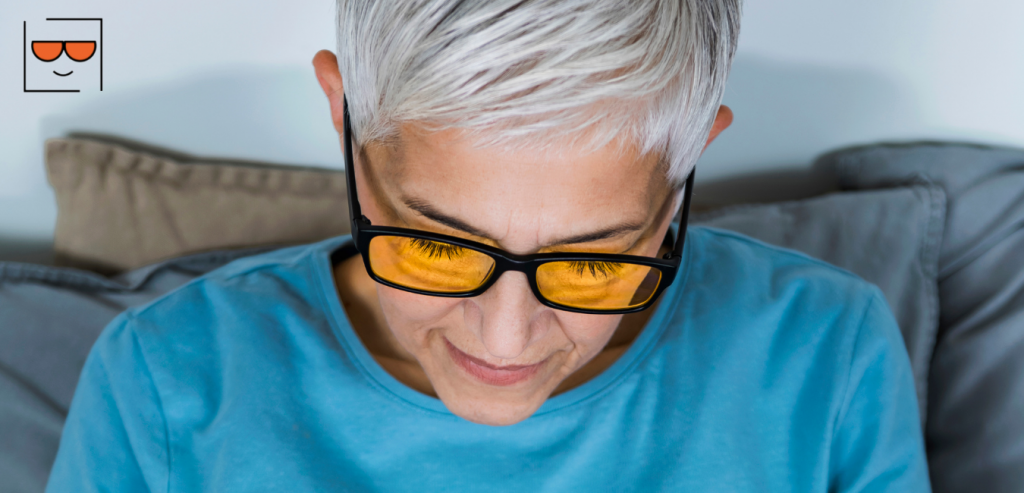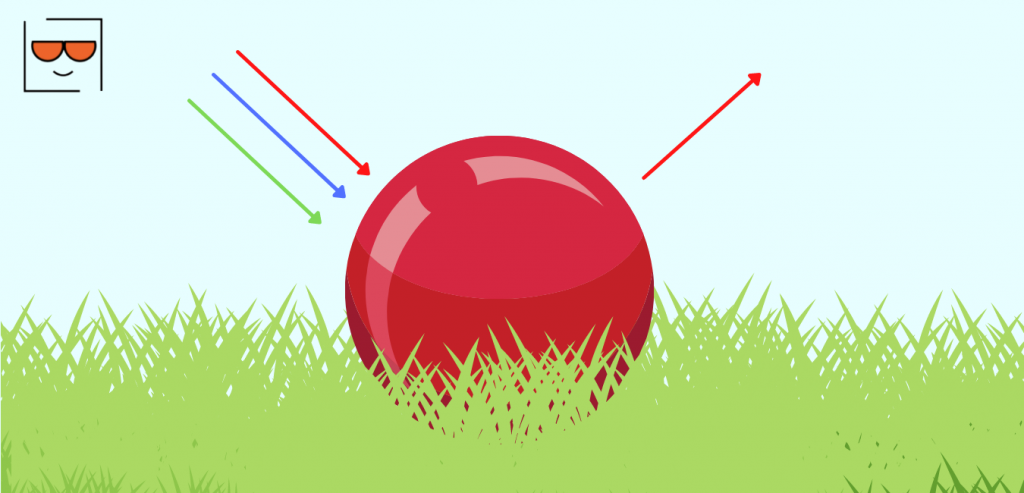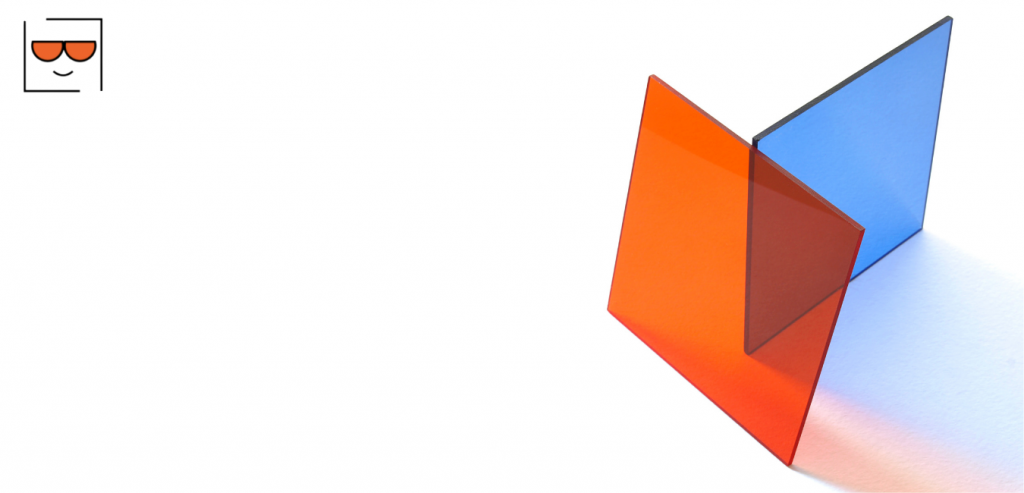
Blue light has become an increasingly prevalent concern for many individuals who rely heavily on blue light-emitting devices such as phones, computers, and tablets. But how do you know what blue light filter is going to be effective? With companies marketing blue light blocking products from screen protectors, 100% blue light blocking sleeping glasses, and blue light blocking light bulbs, what makes these products work effectively, and how can you tell the difference between those that aren’t? In addition, why do so many blue-blocking filters come in an amber tone?
To better understand how to purchase blue light filters, it is essential to understand what blue light is and how it can be blocked or removed.
What is Visible Light?

Blue light is a part of the visible light spectrum, a small segment of the electromagnetic spectrum that the human eye can see. Electromagnetic energy travels in waves and spans a broad spectrum from long radio waves to short gamma rays. The visible light spectrum is the range of wavelengths called visible light that helps us recognize objects’ color. Color is both an inherent property of light and an artifact of the human eye. Things don’t have color. Instead, they give off light that “appears” to be a color to the human eye. The wave itself is too fast for our eyes to detect. However, the wave’s high motion produces a color the human eye can recognize. Typically, the human eye can see wavelengths ranging from violet light at 380 nanometers to red light at 700 nanometers.
For example, you have a red ball. The ball is not red. Instead, that is how your mind registers the light the ball reflects. Light hits an object, such as the red ball, and while some visible light waves are absorbed into the ball, others are reflected. The waves absorbed into the object are no longer visible to the human eye but rather the waves that reflect off of the thing. The reflected waves go through several layers within our eyes and brain to be recognized. Therefore the color of objects may vary from person to person based upon how their eyes and brain process the information.
What is Blue Light?
Blue light is a small section of the visible light spectrum, similar to that of ultraviolet light, not to be confused with ultraviolet rays, possessing short, high-energy wavelengths. It can be found in the sun’s rays and emitting fluorescent lighting in your home and electronic devices.
While you get most of your exposure to blue light from the sun, people are now getting more exposure than ever from their screens. The increasing concern for blue light exposure results from the widespread use of devices relying on light-emitting diode (LED) technology. This excessive exposure to blue light has some health professionals worried. The issue with blue light is that it decreases our bodies’ melatonin production, affecting our eyes, sleep, and overall well-being.
Why Blocking Blue Light is Important
The amount of exposure to blue wavelengths of light and the time of day is essential. During the day, limited amounts of exposure to blue light can be beneficial by boosting alertness and even your mood. However, as with everything else in life, too much of a good thing can be harmful. Long-term exposure to blue light can be damaging to your health.
Too much exposure to blue light can cause eyestrain and sleep loss. In a 2020 study published by the Indian Journal of Opthalmology, they found that during the COVID-19 lockdown, 32.4% of the studies population used a blue-light-emitting device for 9 to 11 hours a day, while 15.5% used their devices for 12 to 14 hours a day. Excessive exposure to blue light from digital devices can lead to eye strain. Digital eye strain can vary upon its symptoms based on the individual. Symptoms can include sore or irritated eyes, dry eyes, tired eyes, headaches, facial muscles fatigue from squinting, and difficulty focusing.
Blue light can also cause you to lose sleep at night by suppressing melatonin secretion, a sleep-inducing hormone in the brain that regulates the body’s circadian rhythm. When warm red wavelengths of light set it at night, the sensors in your eyes prompt your body to release its natural resource of melatonin. However, when you are exposed to blue wavelengths of light in the evening through digital devices and white light (including LED lights), your body does not recognize it is night and prevents the release of your body’s natural stores of melatonin to induce sleep—ultimately causing you to have a less restful sleep.
The Process of Color Subtraction

Understanding what blue light is and how harmful it can be if over-exposed for an extended period of time is essential. The first step to eliminating blue light is understanding how we see the light through color subtraction.
As explained earlier, the color of an object is determined by the light being reflected off of it. In the process of color subtraction, the color of an object is determined by beginning with a single color or mixture of colors and identifying which color or colors of light are being subtracted from the original set. For example, consider white light to consist of the three primary colors or light- red, green, and blue. If white light shone on the ball, then all three light waves would also be shining on the ball. Using the process of color subtraction, green and blue light are being absorbed or subtracted, leaving only red light to be reflected from the ball. When the red light is reflected into your eye, it will register the ball as being red.
Complementary Colors and Color Subtraction
With a basic understanding of how we can interrupt the light waves, blocking visible light waves using complementary colors and color subtraction will be explored.
Different kinds of pigments exist, and each absorbs only specific color wavelengths of visible light. Pigments reflect the color of the wavelength that they cannot absorb. Most pigments can absorb more than one wavelength, often referred to as compound pigments. However, a pigment that absorbs only a single wavelength is referred to as a pure pigment. The color of light absorbed by a pigment is merely the complementary color of that pigment. Meaning pure blue pigments can absorb orange or amber light since they are complimentary on the color wheel.
Since we want to eliminate or block blue light waves, using a pigment to absorb the light would remove it from our vision. On the color wheel, blue is complementary to the color orange or amber, depending on the shade of blue. Therefore to block blue light, there must be an orange or amber pigment to absorb the wavelengths.

Filters and Color Subtraction
Pigments are permeated throughout both opaque and transparent objects capable of absorbing light frequencies. Opaque materials selectively absorb one or more frequencies of light and reflect what is not interested. In contrast, transparent materials selectively absorb one or more frequencies of light and transmit what is not being absorbed. Thus, knowing the color(s) of the light falling on an object and the color of the light absorbed by the pigment or filter, the subtraction process can be applied to determine the appearance of the color of transparent material.
Therefore to block out blue light, a filter with the tint of its complementary color must be applied to absorb blue light waves and preventing them from being absorbed by the eye. Using another color other than blue’s complementary color orange (amber) will not eliminate the blue light wavelengths, nor will using a clear filter since it cannot absorb wavelengths due to its lack of pigment.
Summary
Blue light is a small segment of the visible light spectrum that can be seen from the human eye. While most of your exposure to blue light comes from the sun, people are being exposed to more blue light than ever before through the widespread use of devices such as phones, computers, tablets, and home lights which include incandescent, fluorescent, and LED technologies. Although it is not healthy to remove all blue light from your life, long-term exposure can be harmful. As with everything in life, moderation is key. A filter of the visible light wave complementary color must be used to absorb the blue light waves and prevent them from being absorbed into the human eye to limit your exposure to blue light. With a better understanding of how blue light is blocked effectively, you can protect yourself by purchasing adequate blue light blocking filters!
Ready to Purchase Your Blue Light Blocking Product?
Start Blocking Blue Light Now!

 10% off Blue-Free Motion Sensing Light with Coupon Code BLUEMOTION10
10% off Blue-Free Motion Sensing Light with Coupon Code BLUEMOTION10